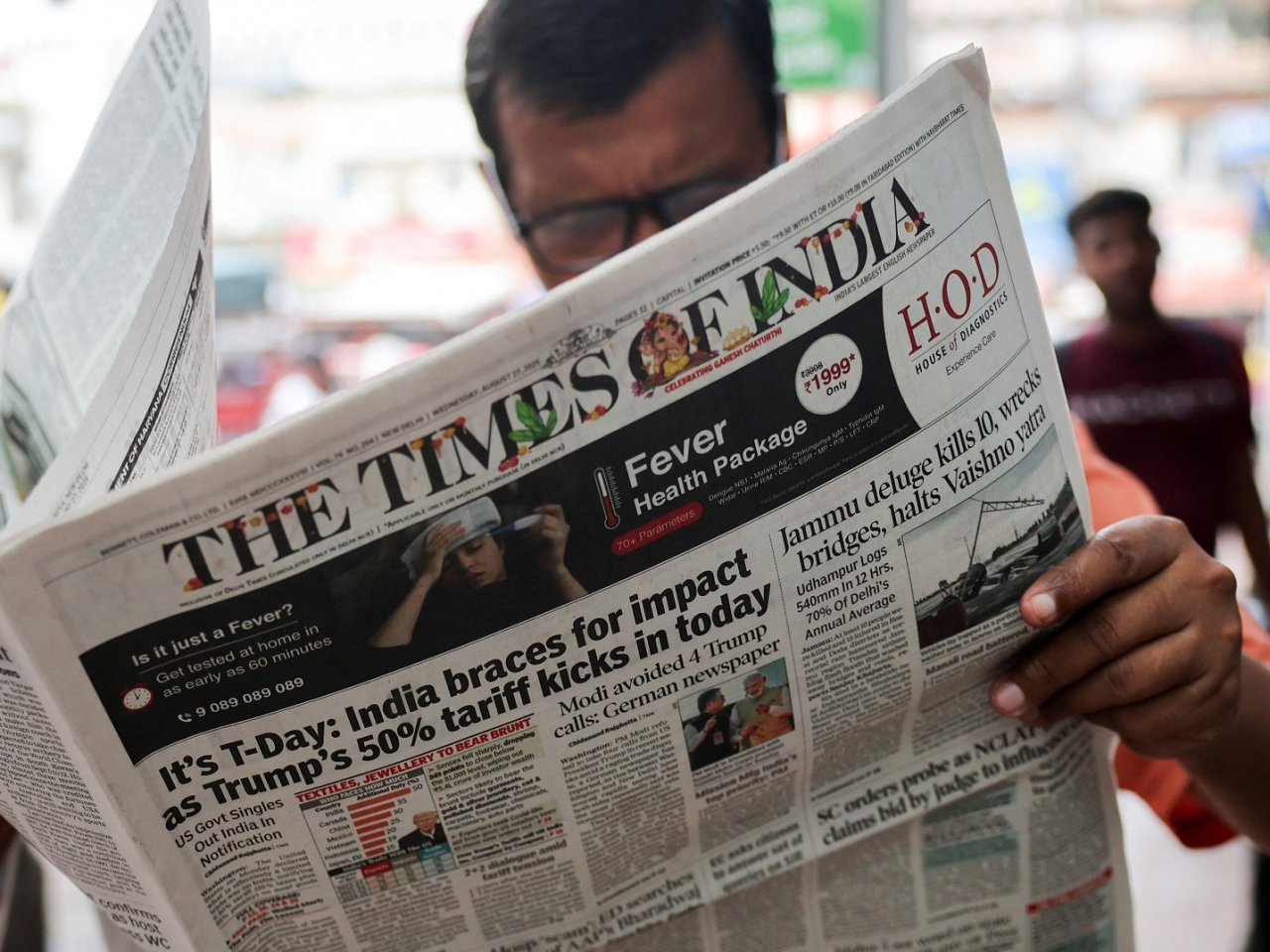US President Donald Trump's doubling of tariffs on goods from India to as much as 50 percent took effect as scheduled on Wednesday, escalating tensions between the world's two largest democracies and strategic partners.
A punitive 25 percent tariff imposed due to India's purchases of Russian oil adds to Trump's prior 25 percent tariff on many products from India.
It takes total duties to as high as 50 percent for goods such as garments, gems and jewellery, footwear, sporting goods, furniture and chemicals, among the highest imposed by the US and on par with Brazil and China.
The new tariffs threaten thousands of small exporters and jobs, including in Prime Minister Narendra Modi's home state of Gujarat.
India's Commerce Ministry did not immediately respond to a request for comment. However, a ministry official, speaking on condition of anonymity, said exporters hit by tariffs would receive financial assistance and be encouraged to diversify to markets such as China, Latin America and the Middle East.
A US Customs and Border Protection notice to shippers provides a three-week exemption for Indian goods that were loaded onto a vessel and in transit to the US before the midnight deadline.
These goods can still enter the US at prior lower tariff rates before 12.01am EDT (0401 GMT) on September 17.
Also exempted are steel, aluminium and derivative products, passenger vehicles, copper and other goods subject to separate tariffs of up to 50 percent under the Section 232 national security trade law.
Trade ministry officials in India say the average tariff on US imports is around 7.5 percent, while the US Trade Representative's office has highlighted rates of up to 100 percent on autos and an average applied tariff rate of 39 percent on US farm goods.
As the midnight activation deadline approached, US officials offered no hope for India to avert the tariffs.
"Yeah," said White House trade adviser Peter Navarro when asked if the increased tariffs on India's US-bound exports would go into effect as previously announced on Wednesday. He offered no further details.
Wednesday's tariff move follows five rounds of failed talks, during which Indian officials had signalled optimism that US tariffs could be capped at 15 percent, the rate granted to goods from some other major US trade partners including Japan, South Korea and the European Union.
Officials on both sides blamed political misjudgement and missed signals for the breakdown in talks between the world's biggest and fifth-largest economies.
Their two-way goods trade totalled US$129 billion in 2024, with a US$45.8 billion trade deficit for Washington, according to US Census Bureau data. (Reuters)





